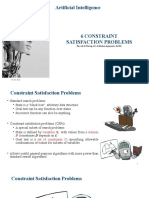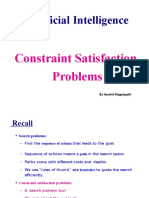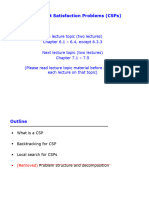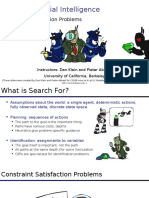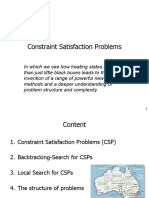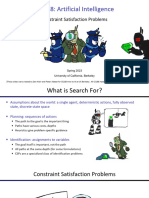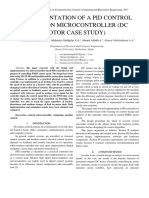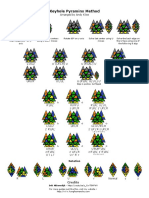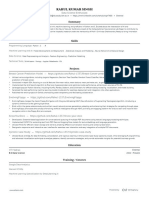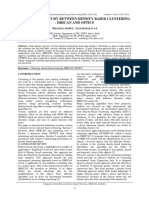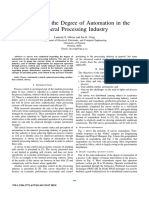0% found this document useful (0 votes)
25 views61 pagesLecture 5
The document discusses various search algorithms used in Artificial Intelligence, focusing on both uninformed (BFS, DFS, UCS) and informed (Greedy Best-First Search, A* Search) methods. It introduces Constraint Satisfaction Problems (CSPs), explaining their structure, types, and applications, along with search methods like backtracking and their efficiency. The document also provides examples of CSPs, such as Sudoku and scheduling problems, illustrating how these concepts are applied in real-world scenarios.
Uploaded by
Abusabah I. A. AhmedCopyright
© © All Rights Reserved
We take content rights seriously. If you suspect this is your content, claim it here.
Available Formats
Download as PDF, TXT or read online on Scribd
0% found this document useful (0 votes)
25 views61 pagesLecture 5
The document discusses various search algorithms used in Artificial Intelligence, focusing on both uninformed (BFS, DFS, UCS) and informed (Greedy Best-First Search, A* Search) methods. It introduces Constraint Satisfaction Problems (CSPs), explaining their structure, types, and applications, along with search methods like backtracking and their efficiency. The document also provides examples of CSPs, such as Sudoku and scheduling problems, illustrating how these concepts are applied in real-world scenarios.
Uploaded by
Abusabah I. A. AhmedCopyright
© © All Rights Reserved
We take content rights seriously. If you suspect this is your content, claim it here.
Available Formats
Download as PDF, TXT or read online on Scribd
/ 61



















